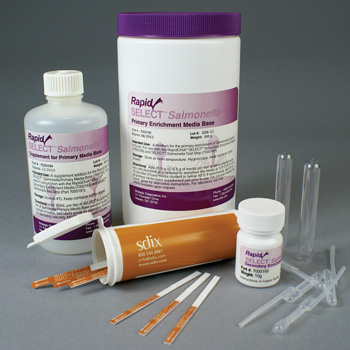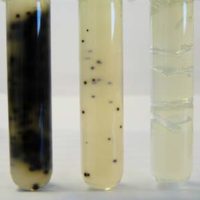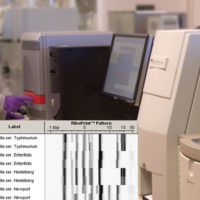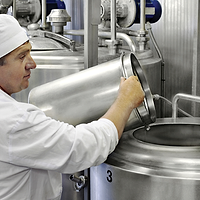Eggs are a staple in most Americans’ diets. On average, Americans consume 220 million eggs daily. This summer, the U.S. experienced one of the largest recalls involving eggs potentially contaminated with Salmonella Enteritidis (SE), implicating over 500 million eggs and linked to more than 2,000 reported illnesses. SE is the second most commonly human-isolated Salmonella serotype according to the Centers for Disease Control and Prevention, responsible for over 200,000 illnesses a year in the U.S. About 64% of those illnesses are attributed to eggs or egg-containing products.
Also this summer, the U.S. Food and Drug Administration (FDA) enacted a new Final Rule entitled “Prevention of Salmonella Enteritidis in Shell Eggs During Production, Storage and Transportation” (74 FR 33030). The Rule mandates testing of the layer house environment for SE. If SE is detected, eggs are then screened to ensure no contaminated eggs reach consumers. Despite the recent regulation governing testing and control of SE in eggs, it remains a threat to consumer product safety. Testing for SE will need to be made easy-to-do and cost-effective, with rapid test kits readily available to the market, which today is simultaneously facing a new regulation and a costly recall.
How Does Salmonella Enteritidis Contaminate the Egg?
SE egg contamination begins in the layer house environment. It is introduced into the house by means of infected pullets or by vectors such as flies and rodents. Once inside the house, the hens ingest SE through contaminated insects or feed. The pathogen begins to multiply in the organs of the hen, such as the ovaries. SE is then available to potentially contaminate developing eggs before they are laid.
FDA Rule Focuses on SE in the Layer House
If contamination of the house is found through routine environmental monitoring, it can be eliminated or reduced, thus halting or reducing SE exposure to the hen and ultimately to the egg. The new FDA Final Rule focuses on monitoring the layer house for SE and keeping the house SE-free.
The Challenge: FDA BAM Method for Detecting SE in Environmental and Egg Samples
Part of the Final Rule includes a proposed method to test environmental and egg samples for SE. This method requires multiple transfer steps, different media and agar to prepare and store, two different incubators, trained microbiologists and at least 3–7 days for a negative result. Egg producers should not be asked to compromise on SE testing. Rather, they should look for alternative methods where they can get the accuracy, ease-of-use, training efficiencies, faster time-to-result and reduced overall testing costs they need to provide safe eggs and a sound business.
The Solution: RapidChek® SELECT™ Salmonella Enteritidis
The RapidChek SELECT SE test system is a breakthrough in Salmonella testing for the industry, offering one of the first sero-specific rapid assays. This technology was developed with direct input from egg producers who experienced difficulty complying with the testing demands of the new FDA Final Rule. The system generates exceptionally accurate results in the most challenging samples in a highly cost-effective and timely manner.
This system delivers results for environmental samples 1 day faster than the FDA BAM method and with increased sensitivity and accuracy. The system also delivers results for egg samples 5 days faster than the FDA BAM method. These benefits of time and accuracy allow egg producers to identify SE in the environment before it contaminates eggs, thus ensuring safer eggs and reducing the chances of a costly egg recall. This ability to screen for SE quickly and accurately is especially relevant today given the recent egg recalls.
Easy, Cost-effective SE Testing
The RapidChek SELECT SE ensures easy and cost-effective compliance with the new FDA Final Rule. Labs that ran this system side-by-side with competitive methods have realized a measurable reduction in hands-on time, time-to-result and overall testing costs. Moreover, there are no up-front expenses for automated equipment, annual maintenance fees or contracts to sign.
Reasons to Choose RapidChek SELECT Salmonella Enteritidis
1. Accurate Results. Very low levels of false positives and negatives provide minimal disruption to daily operations.
2. Lowest Total Cost-in-Use. Hidden costs of traditional or culture methods include: time-to-result, analyst hands-on time and lab equipment and space requirements.
3. Simple. Continual training of staff on complex traditional and culture methods is exhausting, and it drains a company’s resources. The system’s simplicity will reduce the number of potential errors.
4. Fast Time to Result. Users must choose a method that will give results in a timely fashion. The system reduces the time-to-result by days.
5. Provides Valuable Information. The system provides an early indicator of potential environmental SE contamination before the contamination becomes transferred to the egg.
Conclusion
Using an accurate, easy-to-use method to test environmental and, if required, egg pool samples, will make transition to and maintenance of complying with the FDA Final Rule easy. It will also help egg producers advance the safety of eggs while minimizing expenses but not disrupting everyday operations.
Detecting Salmonella Enteritidis in Shell Eggs




